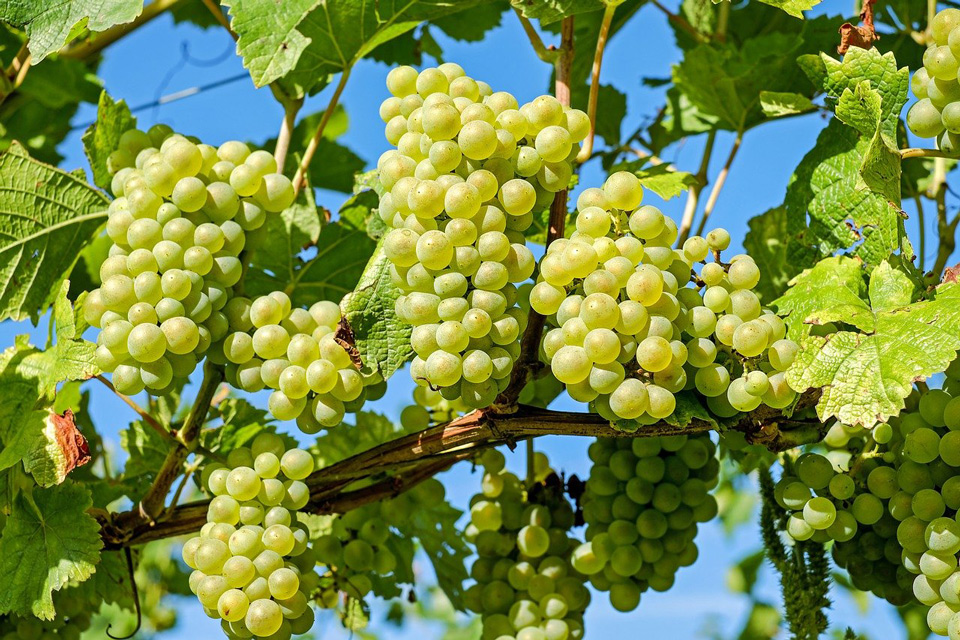
Image by Couleur on Pixabay
October 12, 2025 - Farmers and winegrape growers will be able to compost large amounts of agricultural waste onsite, such as when they remove an old orchard of vineyard, thanks to a new law, SB 279, by Sen. Jerry McNerney, D-Pleasanton, that Gov. Gavin Newsom signed on Saturday.
The enactment of SB 279 follows the state’s ban earlier this year on most agricultural burning in the San Joaquin Valley.
“California farmers and winegrape growers are facing a new challenge now that burning agricultural waste is no longer allowed and must ship their green waste to large composting facilities, often hundreds of miles away at great expense,” said Sen. McNerney, D-Pleasanton, who is a member of the Senate Agricultural Committee. “With the governor signing SB 279, California farms and vineyards will have a more affordable alternative that is also good for the environment.”
SB 279, which takes effect Jan. 1, will also benefit community composting programs, urban farms, and school farms by allowing them to compost larger amounts of green waste onsite.
SB 279 won unanimous approval in both houses of the Legislature. The legislation is sponsored by Californians Against Waste, California Association of Winegrape Growers, Western Tree Nut Association, California Alliance for Community Composting, The Climate Center, and People Food & Land Foundation.
“California winegrape growers have long been committed to sustainability. That is why we support this important legislation. SB 279 will make it easier for growers to compost grape vines that have been removed due to the historic challenges facing the wine industry. That compost added back to ag land has incredible benefits for carbon sequestration, healthy soils, and fighting climate change,” said Michael Miiller, director of Government Relations for the California Association of Winegrape Growers.
“SB 279 is a significant tool that could help agriculture begin to answer the major dilemma it faces with the closure of so many biomass plants. It opens the door for many of our growers to get introduced to composting, which is especially critical in those times when you have to replace an entire orchard. For our smaller growers this may be the only solution, and we welcome its passage at a time we so desperately need answers,” said Roger Isom, president and CEO of Western Tree Nut Association.
“California can’t afford to let food scraps and yard waste keep fueling climate pollution,” said Erica Parker, policy associate at Californians Against Waste. “Our state has set ambitious targets for keeping organics out of landfills. SB 279 will expand composting capacity to protect our climate and advance sustainable, community-centered solutions.”
“By investing in composting, we’re investing in our farmers and our future,” said Baani Behniwal, Carbon Drawdown director for The Climate Center. “SB 279 will help California lead the way in building a more sustainable, resilient, and climate-beneficial food system. Thank you to both Senator McNerney and Governor Newsom for their leadership.”
“We welcome legislation that increases the volume limit for community composting activities that are excluded from state facility permitting processes,” said Kourtnii Brown, CEO and co-founder of California Alliance for Community Composting. “This will enhance opportunities for cities, towns, rural counties, and now also public agencies to maximize their local composting capacity and create healthy compost closer to where the organic resources are generated and used, like at public parks and local farms.”
“At a time of intense political division, healthy soils are common ground. With the Governor’s signature on SB 279 today, California will expand access to high-quality, locally made compost and put it to work where it’s needed most. The unanimous votes in both the Senate and the Assembly — a groundswell of support — affirm a simple truth: When we cycle carbon and nutrients back into the soil, organic ‘wastes’ become resources that feed the earth and feed our people — regenerating soils, boosting farm productivity, conserving water, and advancing climate action,” said John Heywood, executive director, People, Food and Land Foundation.
California currently has a shortage of composting facilities, making it even more challenging for farmers and winegrape growers to dispose of their green waste. According to a recent report from CalRecyle, the state needs 50 to 100 additional organic waste recycling facilities to meet current demand.
SB 279 enables:
- Farmers and winegrape growers to compost onsite when they have large amounts of agricultural waste, such as when they remove an old orchard or vineyard, and combine their compost with agriculture waste from offsite;
- Community composting, urban farms, and school farms to compost up to 200 cubic yards of green waste, and up to 500 cubic yards for publicly owned compost activities (they’re both currently capped at 100 cubic yards);
- Composting operations to sell or give away up to 5,000 cubic yards of compost a year (farms and vineyards are currently capped at 1,000 cubic yards).
Sen. Jerry McNerney is chair of the Senate Revenue and Taxation Committee and his 5th Senate District includes all of San Joaquin County and Alameda County’s Tri-Valley.
Source: Senator Jerry McNerney



